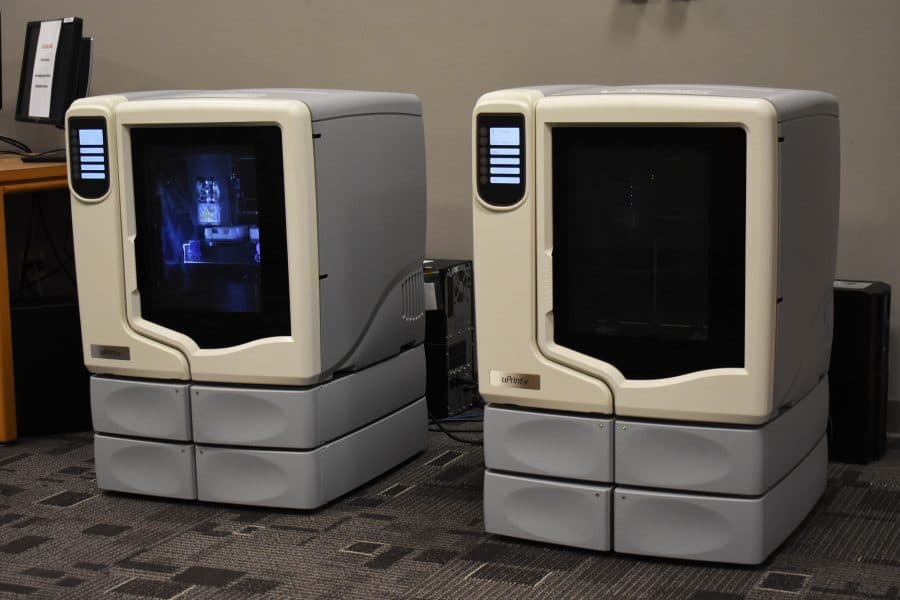In an ever-evolving, tech-dependent world, advances in medicine have made the lives of amputees more convenient, physically and financially. The advent of 3-D printing (also known as additive manufacturing) and the continuous development of technology has expanded the realm of possibilities for creativity and design in the medical field. Access to this technology has changed the game for manufacturing prosthetic limbs – a traditionally expensive and complex procedure that is being made more accessible thanks to this new technology.
This is praised as a cheaper alternative to old-school prosthetics, which, depending on their construction and purpose, can cost thousands of dollars. The U.S. Department of Veterans Affairs conducted a study in 2005 to project costs for prosthetics and assistive devices and found upper limbs averaged between $31 and $440, with lower limbs ranging at even higher costs. Costs are even higher for children, whose constant growth spurts and changing bodies make it difficult and costly to provide and use prosthetic limbs.
It is now plausible for 3-D printing and its low-cost production to revolutionize the creation of hands, arms and legs. Especially for children with missing limbs, their constant growth makes it difficult for parents to easily shell out a few thousand dollars with every growth spurt. With traditional prosthesis, in the time between taking the measurements and delivering the prosthetic back to the patient, a child could have easily outgrown the piece before receiving it. In circumstances such as these, 3-D printing is a viable, temporary solution to provide prosthetics that can grow and be replaced more easily and rapidly, relieving some financial burden.
“The most challenging part is to tailor the prosthetic to the patient, taking measurements, etc.,” said Jason Bara, associate professor in the chemical and biological engineering department at the University. “The design process is entirely digital after that, and with a reliable 3-D printer, the prosthetic could be produced within hours to a few days at most.”
Senior chemical engineering major Valerie Levine created a project earlier this year to provide 3-D printed hands to children who lack them, working with children’s hospitals in Atlanta and Birmingham. Geographic location caused difficulties, but technology was able to solve this problem for Levine.
“An initial difficulty was creating devices for recipients in another state, who we would not meet prior to the fitting,” Levine said. “This issue was solved quite easily by technology. I created a guide for measurements so the parent or guardian of each recipient could take these measurements and send a picture of the recipient’s hands.”
These accessible prosthetics make customization, affordability and accessibility easier to come by. With low manufacturing cost and a shorter turn-around period, 3-D printing is a step toward increasing access to artificial limbs for those in need. In relation to Levine’s project, there are certain benefits that could make 3-D printing a staple in medicine, such as the quick production and almost nonexistent costs.
“[The hands] are low in cost, under $50 to create and of no cost to the recipients,” Levine said. “Compared to traditional prosthetic devices, [they are] efficient to create and provided to the recipients in a short span of time. This is important for young recipients, as they are still growing. By the time they are fit with a traditional prosthetic, they will quickly outgrow the device. We can provide prosthetic hands very quickly and build a new prosthetic for the recipient at their new measurements as needed.”
Technology is ever-evolving and for now, what is available to patients will have to do. Advances are being made daily to develop software that could create limbs with more functions to facilitate more than basic motor functions, such as writing and typing. With something constructed so precisely, it is easy for breakage and durability issues to arise.
“The advantage of 3-D printing is that one can do all sorts of customization based on the individual’s needs/wants,” Bara said. “One drawback is that 3D printers can’t always make use of the ‘best’ [strongest, most flexible, most durable] plastic materials, which conventional manufacturing can.”
There is still a long way to go in crafting stronger and more durable prosthetics, but the growth and furthering of the technologies surrounding it are taking steps in that direction.
“3-D printing won’t be replaced, but it will constantly evolve over time,” Bara said.
Whether it is a passing stage of development or a loophole for conventional manufacturing with sky-high pricing, this technology is making way for a future in which certain aspects of healthcare are more accessible.
“I believe that 3-D printing is a viable option for prosthetic devices now and in the future,” Levine said. “The fact that 3-D printing technology is advancing even further, it will be a part of the future of prosthetic devices and medical technologies.”







